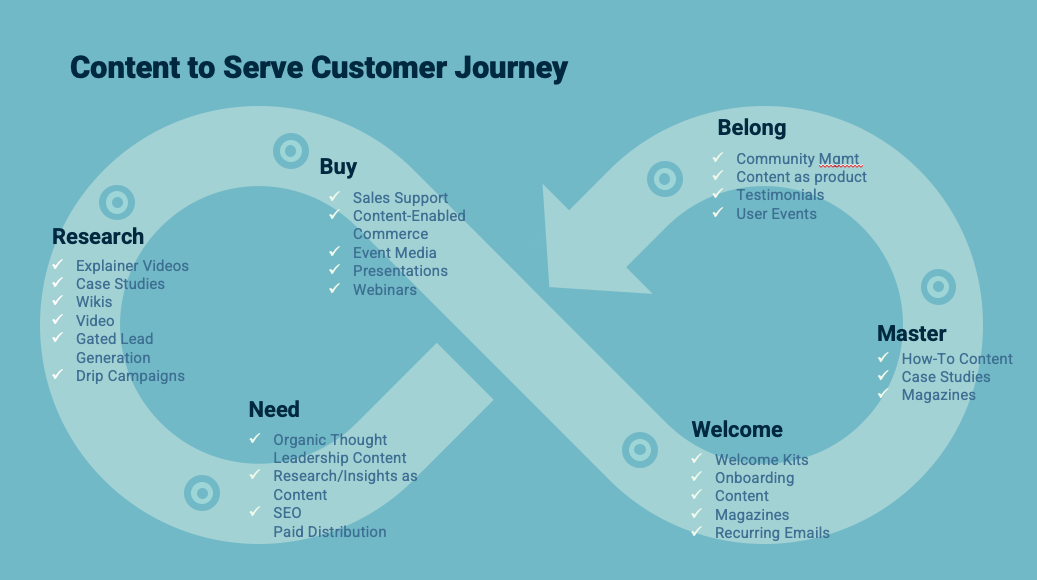



By Jeff Walter, Senior Editor
Everybody knows that search engine optimization (SEO) is crucial to 21st-century businesses vying for online market share, but it shouldn’t take precedence over the customer experience.
That last part is the main takeaway of Google’s new search algorithm, which it has dubbed the “helpful content update.” This change, the technology giant says, is “part of a broader effort to ensure people see more original, helpful content written by people, for people, in search results.” The update, announced August 18, was set to begin rolling out last week.
In a nutshell, the new system works by deploying a signal that detects and penalizes sites with high amounts of unhelpful content. Even helpful content will be less likely to perform well if other content on the same site is not helpful. This emphasis on quality over quantity means some businesses would be advised to remove website content that falls short of the standard.
What distinguishes helpful content from its evil twin?
To Google, it’s a matter of whether it was created primarily for people (and by people) or for search engines. Would the intended audience find the content useful, or feel let down by “click bait”? Does it demonstrate firsthand expertise, or is it simply others’ recycled wisdom with no value added? Will readers learn anything from it? Will they have a satisfying experience?
While analytics, traffic monitoring and website scanning can help organizations assess how they are faring with the new algorithm, a bit of soul-searching is also in order: What is the real purpose of the content we’re providing? At Hammock, we’ve long preached the gospel of “help not hype.” That means taking time to get to know the audience and what kind of information is likely to engage them, and then delivering it. Data, perhaps? How-to guides? Informed predictions about coming trends?
If you haven’t been providing helpful content, it’s not too late to change your ways. The pressure is on to share what you know!
About Hammock Healthcare Idea Email | This post is part of Hammock’s award-winning Idea Email series. Idea Emails are sent every other week and share one insightful marketing idea. Idea Email comes in two flavors: Original and Healthcare. To subscribe to the original Idea Email (general marketing ideas), click here. To subscribe to the Healthcare Idea Email (healthcare marketing ideas), click here.

By John Lavey, President
We view helpful content as one of the highest forms of marketing. Helpful content is superior marketing to content that hypes a solution.
Sometimes the most helpful kind of content, particularly for B2B marketing, is educating your customers and creating resources that they can use to do their jobs more effectively.
Helping educate your audience to help them be better at their jobs can take many forms. Here are three ideas:
User conferences
Many of our clients host user conferences, assembling a curriculum to introduce customers to the latest and best ideas about their job. These two-day or three-day events are big lifts for companies to put on, and they can be expensive, but they are viewed positively by customers.
Client universities
Some clients we’ve worked with have adopted the idea of themselves as a university, continually teaching their customers how to be better at their job. When the customers are a channel seller of their solution, it’s not only helpful but also savvy. The university model differs from the user conference model to the extent that the teaching and the messaging last beyond the three-day span. The investment in that kind of marketing spans year round.
Library of resources
This kind of content marketing offers clients a library of resources to help them do their jobs. Providing presentation decks, e-books, videos and more, marked with their branding so they can use them in their marketing or sales to clients, is good content marketing.
How can you help teach your client and sharpen your content marketing?
About Hammock Healthcare Idea Email | This post is part of Hammock’s award-winning Idea Email series. Idea Emails are sent every other week and share one insightful marketing idea. Idea Email comes in two flavors: Original and Healthcare. To subscribe to the original Idea Email (general marketing ideas), click here. To subscribe to the Healthcare Idea Email (healthcare marketing ideas), click here.

Every healthcare organization has stories to tell, and case studies based on success stories can be a powerful form of content marketing. A thoughtful and well-executed case study can:
Unfortunately, many organizations find it daunting to convert these stories into studies that produce results. They struggle with finding the right client or story to feature, they overcomplicate the story by getting bogged down in minutiae that nobody really cares about, or they fail to make the story relevant to a larger audience.
At Hammock, our decades of experience in helping healthcare industry clients tout their successes have taught us some essential lessons about what makes a great case study:
We would welcome the opportunity to talk with you about how we can help you turn your success stories into case studies that help you build on those recent successes.
Image: Getty Images
About Hammock Healthcare Idea Email | This post is part of Hammock’s award-winning Idea Email series. Idea Emails are sent every other week and share one insightful marketing idea. Idea Email comes in two flavors: Original and Healthcare. To subscribe to the original Idea Email (general marketing ideas), click here. To subscribe to the Healthcare Idea Email (healthcare marketing ideas), click here.

By John Lavey, President
With the labor market as tight as it is, it has never been harder to attract and retain talent. If your company is like some, the move to remote work means that you are no longer just competing with companies in your geographic area; you are competing against the rest of the world for the best people in your industry.
Finding ways to stand out from the competition and truly engage potential candidates for hire is hard to do, but using video to assist your recruiting efforts is a dynamic way to meet that challenge.
Short videos that tell authentic stories about who you are and why someone would want to work with you right now can cut through the details you will likely have to share in a job posting.
Here are some of the tips for what you will want in an effective video to accompany your recruitment postings:
Short—The most popular format for viewing videos right now is on TikTok, and the sweet spot for length of video there is 7 seconds to 15 seconds. Chances are you can’t communicate the value of a role in a TikTok video, but you should aim for brevity. There are industry-specific and platform-specific standards, but getting a video to 1 minute is a good goal.
Authentic—Letting your passion come through about your mission as an organization and why you care about what you do is important. It’s not so much what you say as how you say it. That energy is contagious.
Clear—Get to the point quickly, or create a clear call to action about what they can do next if interested. The platforms themselves can provide an assist here. But if it’s important, for example, to make it clear whether you are open to remote work, say it out loud.
Storytelling content is a critical part of every stakeholder journey, not just your customer journeys. Think about how you can help your prospective employees at each stage of their search. Video can help.
Image: Getty Images
About Hammock Healthcare Idea Email | This post is part of Hammock’s award-winning Idea Email series. Idea Emails are sent every other week and share one insightful marketing idea. Idea Email comes in two flavors: Original and Healthcare. To subscribe to the original Idea Email (general marketing ideas), click here. To subscribe to the Healthcare Idea Email (healthcare marketing ideas), click here.

We often take it for granted that a content calendar is part of the value we provide healthcare clients, but being able to provide timely, consistent, relevant and highly engaging content requires planning, a structured slate of content and an accompanying schedule.
For social media, blog posts and content campaigns, having a content calendar helps you avoid duplicating content, saves you from last-minute (poor) planning, and helps you visualize your content strategy well into the future.
Our approach to creating content for healthcare clients means creating content in advance while allowing room for timely opportunities to respond to something newsworthy that captures the attention of the audience.
Our experience over time is clients need real-time visibility (or close to that) into the status of projects in the works. So, creating a schedule in a shared, collaborative platform can be the basis for a good workflow.
The calendar, combined with status updates and performance reporting, feeds best practices and a great partnership.
Most companies can’t create content effectively on their own. It’s too specialized and expensive to create content across media types, distribute across multiple channels, and measure to determine success.
If you are struggling to share the great stories you have to tell, consider what it will require to stay on track. A content calendar is a wonderful start.
Image: Getty Images
About Hammock Healthcare Idea Email | This post is part of Hammock’s award-winning Idea Email series. Idea Emails are sent every other week and share one insightful marketing idea. Idea Email comes in two flavors: Original and Healthcare. To subscribe to the original Idea Email (general marketing ideas), click here. To subscribe to the Healthcare Idea Email (healthcare marketing ideas), click here.

By Megan Hamby, Editorial Director
Recently, one of our healthcare clients reached out and asked for our help brainstorming some new ideas. She had a white paper that her team had developed, but she wanted to find a few creative ways to repurpose the information into different forms of content.
I got to work immediately, highlighting sections of the 15-page white paper that I thought could be broken down into shorter e-books, strategy guides, tip sheets, infographics and more. I quickly realized that the white paper was chock full of insightful and helpful information that could be broken down into easier-to-digest pieces of content.
If you have a white paper, blog post, infographic or other piece of content that needs a new lease on life, consider repurposing (or upcycling) it. Turn a series of blog posts into a guide; turn an infographic into a video; or use testimonials published on your site on your social media. The possibilities are endless. Repurposing your content has a number of benefits, including:
> Reaching a new audience. Everyone learns differently and consumes information differently. Repurposing your content in a new format—such as an infographic, a video or even a podcast—can reach an audience segment that otherwise might not have found it.
> Boosting traffic. The main goal of repurposing content is to drive more traffic to your site—and improve conversion rates. One study found that organic search still holds the majority share among traffic sources. This means that publishing your existing content in new formats can boost traffic and drive conversions.
> Building credibility and strengthening messaging. Google likes credible, authoritative websites. Repurposing your content in new formats can help build credibility with Google because you have more content about a specific topic on your site. Plus, it strengthens your messaging, positioning you or your organization as a thought leader.
Ready to upcycle your existing content in new, fresh ways? Let us help.
Image: Getty Images
About Hammock Healthcare Idea Email | This post is part of Hammock’s award-winning Idea Email series. Idea Emails are sent every other week and share one insightful marketing idea. Idea Email comes in two flavors: Original and Healthcare. To subscribe to the original Idea Email (general marketing ideas), click here. To subscribe to the Healthcare Idea Email (healthcare marketing ideas), click here.

By Rex Hammock, CEO
For the past few weeks, I have been reading about what marketers have learned throughout the COVID-19 pandemic. One of the most insightful articles I’ve read was “10 Truths About Marketing After the Pandemic,” written by Janet Balis and published in the Harvard Business Review.
Balis, the customer and growth market leader and marketing practice leader at EY Americas, does a great job of explaining how marketers—especially content marketers—are having to adjust their relationship to customers. In her article, she identified 10 ways in which the pandemic has challenged truths about marketing and given us new rules to move forward. Here, I’m highlighting three of those old truths and new rules.
Old Truth: Customers must sit at the heart of your marketing strategy.
New Truth: Customers must sit at the heart of your customer journey.

We write a lot about the customer journey—because we know how important it is. Imagine an infinity loop to show a customer’s life cycle. With the right content marketing, you can help prospects become leads, convert them to customers, and focus attention on them so you create a loyal relationship.
Old Truth: Relationships matter.
New Truth: Relationships are everything.
“It goes without saying that it is vital to build relationships with customers founded on trust,” Balis wrote.
In March 2020, Edelman conducted a global consumer study and found that 60% of people were turning more and more to the brands they were absolutely sure they could trust. Why? According to Richard Edelman, CEO of Edelman, trust is a “game changer for brands because it addresses people’s fears about personal safety, most notably vulnerability on health, financial stability, and privacy.”
That’s why it’s critically important to form genuine connections with your customers, listen to their needs and opinions, and help them find solutions for their problems. Without your customers, your business would not exist.
Old Truth: Marketing is important for growth.
New Truth: Marketing is at the center of the growth agenda for the full C-suite.
We’ve noticed this to be true with several of our clients. As Balis said, “marketing has been elevated within the C-suite as a driver of digital transformation, a key leader of the customer journey, and the voice of the consumer—all of which are of paramount importance to other functional leaders.”
A 2019 report from McKinsey & Company suggests that high-growth companies are seven times more likely to have a chief marketing officer who fosters robust and collaborative partnerships across the C-suite. Why? Because the CMO makes sure that the rest of the C-suite understands how marketing is driving growth and serving the company’s broader goals and objectives, the report says.
Takeaway: Balis said it best: “Marketing now has the opportunity to seize an ongoing central role in the dialogue, thereby driving the organization’s broader growth and innovation agenda.” To read the full article, and Balis’s seven other new rules, click here.

By Rex Hammock, CEO
“Water, water everywhere, but not a drop to drink.”
Samuel Taylor Coleridge’s 1798 poem, “The Rime of the Ancient Mariner,” reminds us that having an abundance of something is not the same as enjoying the benefit from it.

By Rex Hammock
Last year I wrote, “Despite a constant stream of predictions from experts that ‘podcasting is dead,’ I still believe the golden age of customer-focused podcasting is ahead of us.”
Since the earliest moments of podcasting, I have been a true believer in its long-range potential as a cornerstone of any content marketing strategy. But until recently, I’ve been cautious about advising clients to make the medium the central focus of their content market strategy.

By Rex Hammock
This past weekend, 600,000 people visited Nashville to experience the NFL Draft live. In addition to all those cowboy boots on the ground, some 49 million NFL fans viewed the event via seven cable networks and an array of Disney digital properties.
If you’re not an NFL fan, pause now and let this next sentence sink in: There was no actual football game being played at this event—other than the game in which 32 billionaire owners select 254 players who hope to be millionaires soon.